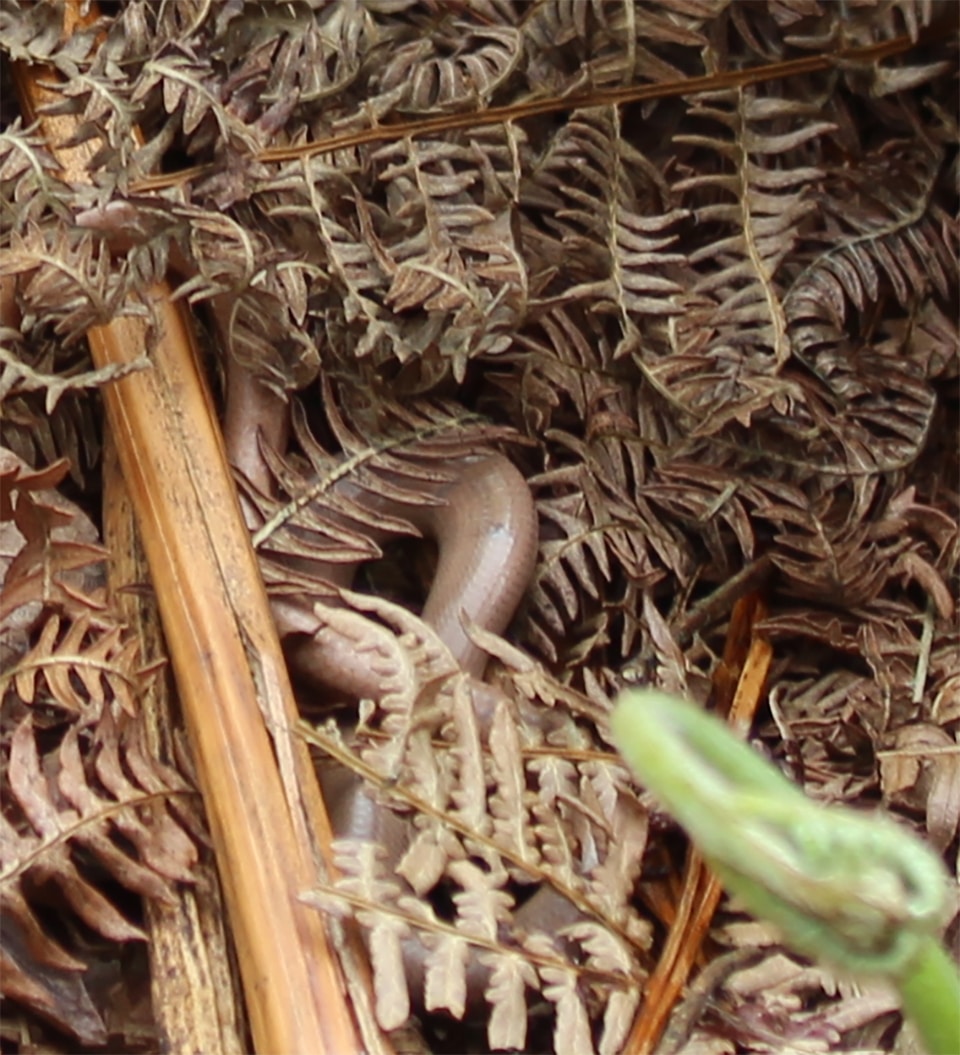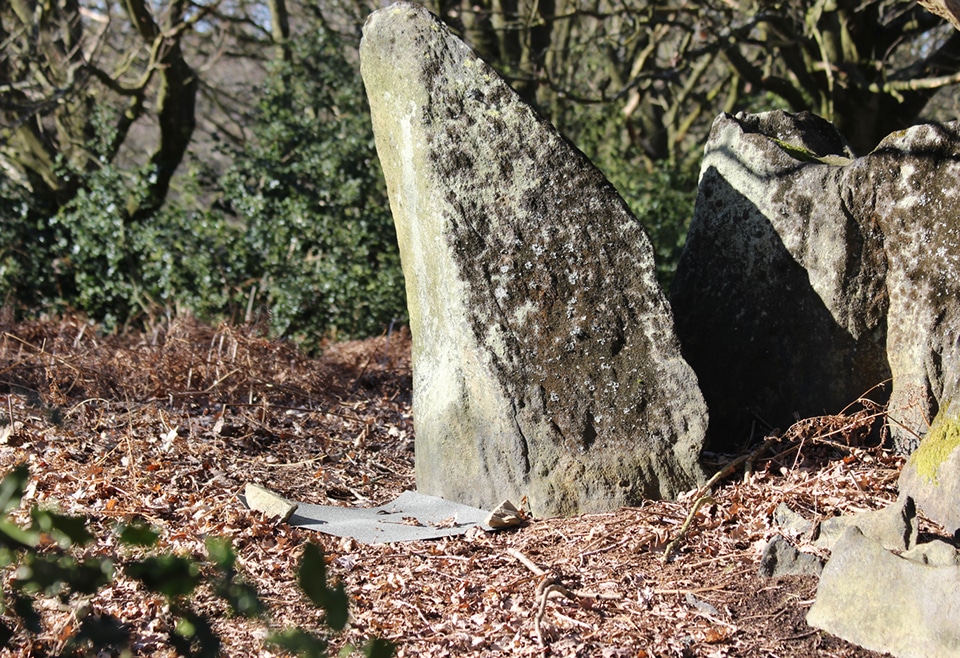Making Homes for Slow Worms
A Case Study from Charnwood Forest
Species Information
Slow worms are neither worms nor, in fact snakes, but a small genus of snake-like legless lizards in the family Anguidae.
Its identity is given away by its abilities and blink with its eyelids.
Slow worms can be found in heathland, tussocky grassland, woodland edges and rides where they can find invertebrates to eat and a sunny patch in which to sunbathe. They are often found in mature gardens and allotments, where they like hunting around the compost heap. However, if you have a cat, you are unlikely to find them in your garden as cats predate them. Like other reptiles, slow worms hibernate, usually from October to March.
How to Identify
The slow worm is much smaller than a snake and has smooth, golden-grey skin. Males are paler in colour and sometimes sport blue spots, while females are larger, with dark sides and a dark stripe down the back.
Distribution
Found throughout the country, except for most Scottish islands, Northern Ireland and most of the Channel Islands.
Ken Moore (Charnwood Forest GC) writes:
I had some roofing felt left over from covering the birdboxes so I cut out 10 one metre squares and laid them in sunny positions facing south and near to rocks. Cold bloodied animals have to warm up before they become active, hence the roofing tiles facing the sun and near rocks provide an ideal environment to warm up.
I have left most undisturbed but thought I would peer under a few and found this slowworm. Unfortunately it had almost disappeared by the time I got my camera out. I’ll be better prepared next time however I do not want to disturb them too much. Where there is one I am sure that there will be many more.
For more information, contact Ken at kmoore-0@hotmail.com.




